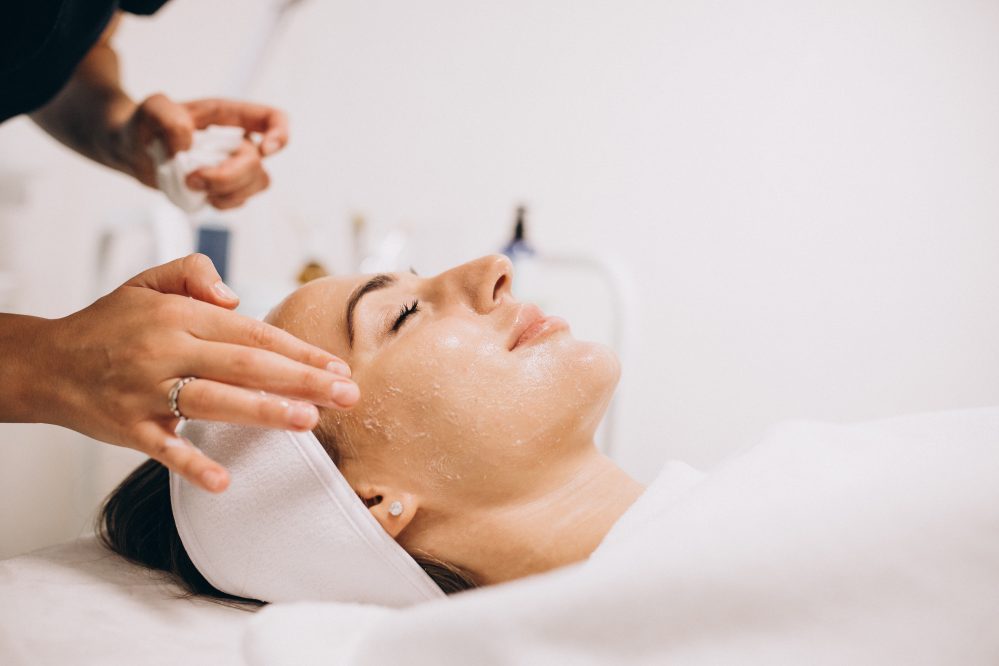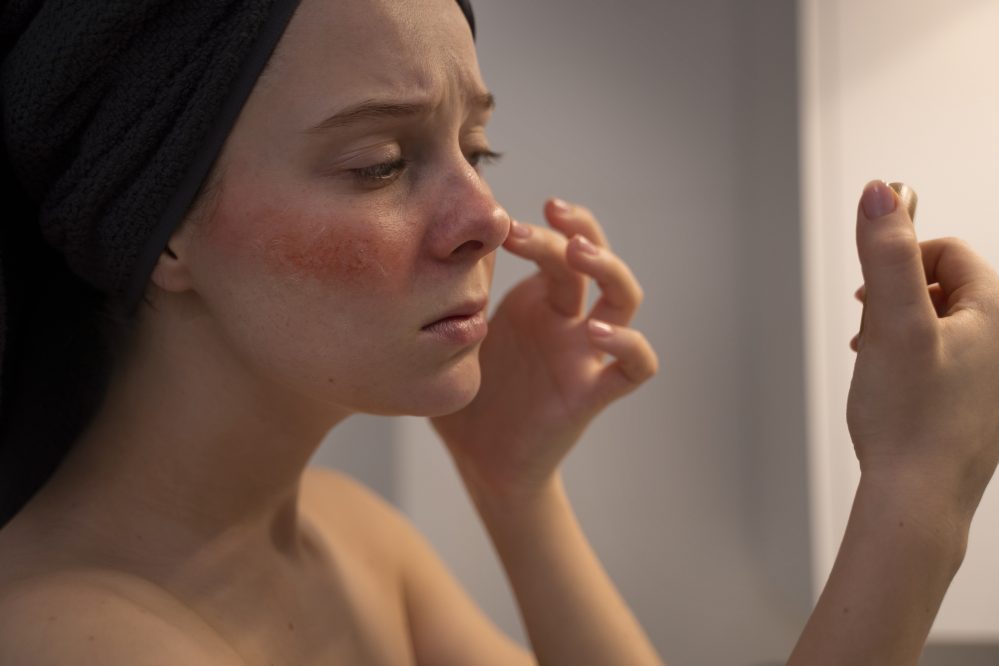Dealing with skin breakouts can be frustrating. Issues like fine lines or acne significantly affect your skin, resulting in unwanted changes in tone or texture. To treat such unpleasantries, healthcare providers often recommend a specific solution: microneedling.
If you want to learn more about this cosmetic procedure, including its benefits, drawbacks, and crucial instructions post-treatment, you have landed on the right page. This article provides a comprehensive guide to trying microneedling and enhancing your skin’s appearance to a glow.
What Is Microneedling?
In dermatology, microneedling is a procedure that involves using thin, sterilized needles to poke the top layer of the skin. It helps produce more collagen and elastin in your face to minimize acne, scars, stretch marks, dark spots, and large pores, thus improving your skin appearance. Also referred to as collagen induction therapy, microneedling is applied for either cosmetic or health purposes.
How Microneedling Works
Microneedling involves minor puncturing in certain areas of your face, which causes minor skin injury. This triggers the skin’s repair mechanisms, and, in response, the skin produces new collagen-rich tissue, resulting in improved skin tone and texture. Dermatologists sometimes suggest pairing microneedling with additional treatments. However, there still is a lack of research that proves this can produce better results. The number of sessions needed may vary depending on the individual’s specific skin issues and goals.
The microneedling session

An average microneedling session typically lasts 30 to 60 minutes, although sometimes it might take up to two hours. The medical practitioner – a plastic surgeon, dermatologist, or aesthetician – cleans the skin before the procedure using a type of topical anesthetic, usually in the form of a cream or ointment. This helps numb the skin to alleviate pain during the session.
Next, the medic uses a hand roller of needles ranging from 0.5 to 2 millimeters. This medical device, usually pen-shaped, is used for puncturing the skin. They will roll it gently across the treatment area. If an electronic device is used, the needles automatically pulse up and down, penetrating the skin. The process may cause the patient to feel a warming sensation or scratching. Bleeding is also normal.
The healthcare provider might finish the session by applying cream to calm your skin cells. All of the tools and medications used during the microneedling sessions are approved by the Food and Drug Administration (FDA).
Consulting a professional
Before microneedling sessions commence, you will consult a healthcare professional. They will examine your skin and analyze your medical records. This is also the time to set forth your expectations for the procedure and to tell the professional what your purpose is.
You might be advised to apply vitamin A or C before microneedling sessions to start collagen production. Avoiding medications like Ibuprofen or those for treating acne is frequently suggested as well.
Microneedling for Different Skin Types and Concerns
Microneedling is one of the most inclusive procedures in dermatology. It is considered safe and effective for a wide range of skin types. Nevertheless, the results might vary when considering skin sensitivity, darkness, and the dermatologic concern you want to address.
It is important to remember that microneedling is not for everyone. Some people are not good candidates for this cosmetic procedure.
You are not considered a good fit for microneedling if:
– You have active acne or are taking medication for acne
– You are dealing with a skin infection
– Your skin is sunburnt or recently tanned
– You have frequent skin rashes, moles, or skin tags
In those cases, the healthcare provider will work with the patient to regulate a skincare routine or treatment before scheduling a microneedling appointment.
Skin Benefits of Microneedling
Collagen induction therapy (microneedling) is a highly beneficial procedure for the appearance of your complexion. For those dealing with various conditions, microneedling helps improve your skin texture, reduces wrinkles and fine lines across your skin, minimizes scars, and controls uneven pigmentation. This procedure is also great for enhancing the effectiveness of your skincare routine because it optimizes your skin’s ability to absorb products.
Improved skin texture
By poking your body’s natural healing response, microneedling fosters the production of the two most essential proteins: collagen and elastin. These two heavily impact your skin’s appearance by reducing rough skin, enlarged pores, and uneven skin texture. You will be left with skin that feels rejuvenated and youthful like never before.
Reduction of fine lines and wrinkles
Diminishing the visibility of fine lines and wrinkles dramatically is another crucial benefit of microneedling. Once again, the increase in collagen is what impacts appearance. It helps plump the skin and gain volume and firmness. This makes lines and wrinkles less noticeable.
Minimization of acne scars and pigmentation
Uneven pigmentation and acne are what people struggle with most for their skin. As a valuable treatment, microneedling is successful in addressing these issues. Micro-puncturing during the procedure encourages the skin to regenerate itself, leading to reduced scar visibility and a more even skin tone.
Enhancing the effectiveness of skincare products
Microneedling impacts the effectiveness of skincare products because the micro-injuries create minimal channels for the skin to absorb products more easily. In addition, your skin becomes more receptive to the ingredients in creams, serums, and other products you use in your daily routine.
Post-Treatment Care & Recovery Process
After leaving your microneedling session, your doctor will guide you on how to speed up the recovery process. These are tips that you can manage to ensure the healing process goes smoothly.
– Exposure to sunlight: Avoid prolonged sunlight exposure, for at least two weeks. Use sunscreen and wear a hat when going out. Also, avoid tanning and anything else that can cause sweating (sauna, workout).
– Medication: Do not take anti-inflammatory medications for one week after the procedure.
– Makeup: Try to steer away from makeup products in the first 24 hours after the procedure to support the healing process. You can resume wearing makeup after.
– Showering: Don’t take hot showers or baths in the first 24 hours after microneedling. Hot water can eliminate natural oils from your skin, therefore disrupting skin recovery. Do not use ice on your face, either.
– Skin peeling: Peeling is a common side effect of microneedling to remove dead skin cells and other debris accumulated in your face. You should resist the urge to pick at your skin at this stage because it can lead to infection.
What to expect during recovery?
In the first three days post-treatment, your face might turn mildly red and swollen, like a sunburn effect. For this, washing your face carefully using moisturizer and cold water is essential. Pat your face dry gently.
Up to the fifth day of recovery, you’ll notice skin dryness and peeling, which is a result of dead skin cell turnover. Please allow the skin to flake off naturally and avoid touching your skin.
After the first week, you will notice that your skin is recovering and no longer feels irritated. At this stage, you may slowly transition to your regular skin care.
Most people experience complete skin improvement three to six weeks after the sessions. However, it might take longer for some others. The first signs of improvement usually are reduced acne visibility and enhanced skin texture and tone.
We advise you to keep checking in with your doctor for promising results.
Possible Side Effects

The microneedling treatment is generally considered a safe procedure for your skin. Adverse effects are minimal, which include swelling (medical term: edema), redness (medical term: erythema), and skin flaking. This can last for a few days.
Some others might also experience bruising in some parts of the skin, tightness, and itching. Mild discomfort and a burning sensation are sometimes associated with microneedling sessions, too.
To avoid any infection, keeping your skin clean is important.
Conclusion
Taking care of your skin is made easy through microneedling. This simple yet highly effective procedure can combat issues with your skin, leading to a smooth and refreshed complexion.
Don’t forget to set regular appointments with your medic to guarantee enhanced results. Adhering to post-treatment instructions is essential to keep your skin from damage as it heals. Enjoy the benefits and help your skin thrive!